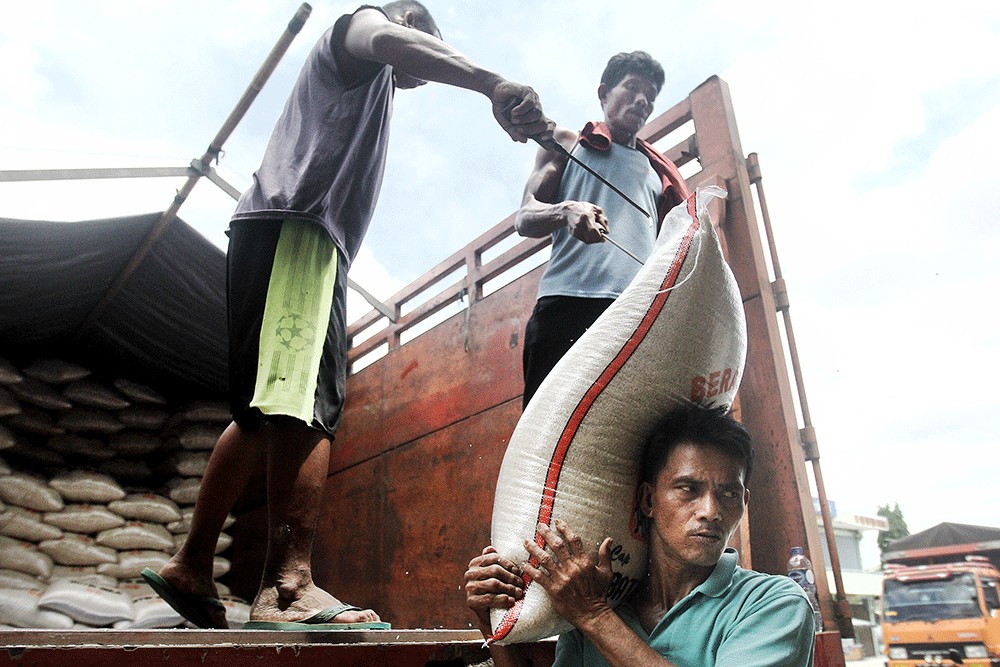Popular Reads
Top Results
Can't find what you're looking for?
View all search resultsPopular Reads
Top Results
Can't find what you're looking for?
View all search resultsRice imports always contentious
Waiting to import rice only after a major shortage arises would be calamitous because what starts as an isolated shortage can quickly escalate into a crisis during the time lag between ordering the imports and the arrival of the shipments.
Change text size
Gift Premium Articles
to Anyone
T
he rationale behind the government’s policy on rice stockpiling, partly from imports, which President Joko “Jokowi” Widodo explained during the second round of the presidential debates on Sunday, makes sense. Particularly so in view of the vulnerability of rice crops to bad weather and pest attacks.
There are several other factors that require the government to build up a contingency stock that can be transported to anywhere across the archipelago to meet unexpected needs: the country is prone to natural disasters, most of the national rice production is in Java, subsidized rice is a component of the social assistance program and only a few countries in the world export rice.
The government has since the early 1970s stockpiled rice through the National Logistics Agency (Bulog) with a view to shielding consumers from food price spikes and ensuring stable prices for both consumers and farmers.
Because rice is the main staple for the majority of the people and most rural households are net rice consumers and rice weighs heavily in the consumer price index (inflation), the government does not want to take even the smallest risk of being caught unprepared when demand rises sharply as a result of one of the factors cited above.
Waiting to import rice only after a major shortage arises would be calamitous because what starts as an isolated shortage can quickly escalate into a crisis during the time lag between ordering the imports and the arrival of the shipments.
Certainly, the efficiency and effectiveness of the management of the stocks depends on the accuracy of domestic production and consumption so that the volume of reserves is not excessive but simply adequate to protect the country from volatile world prices or low production.
The present policy of controlling rice prices within an annually reviewed range of minimum and maximum prices to ensure fairness for both consumers and producers and importing rice only as a contingency measure has been implemented over the past 45 years.
The perpetual subject of contention has always been the reliability and accuracy of the data on production and consumption which, the government itself has admitted, vary widely from one ministry to another.
So when Jokowi said during the debates that Indonesia produced 33 million tons last year while consumption was estimated at only 29 million tons, Prabowo Subianto questioned why the government still imported rice last year at the expense of domestic farmers.
We should not get lost in endless debate as to whether Indonesia needs rice imports or not. We should instead focus on empowering the farmers who produce that staple, providing them with extension services, good production inputs and high-yield varieties.
Rice imports are necessary from time to time depending on the need for stockpiling. But the fact is that imports so far have never exceeded 10 percent of the national demand and imported rice has never been released onto the market below the fixed minimum price for local rice.










